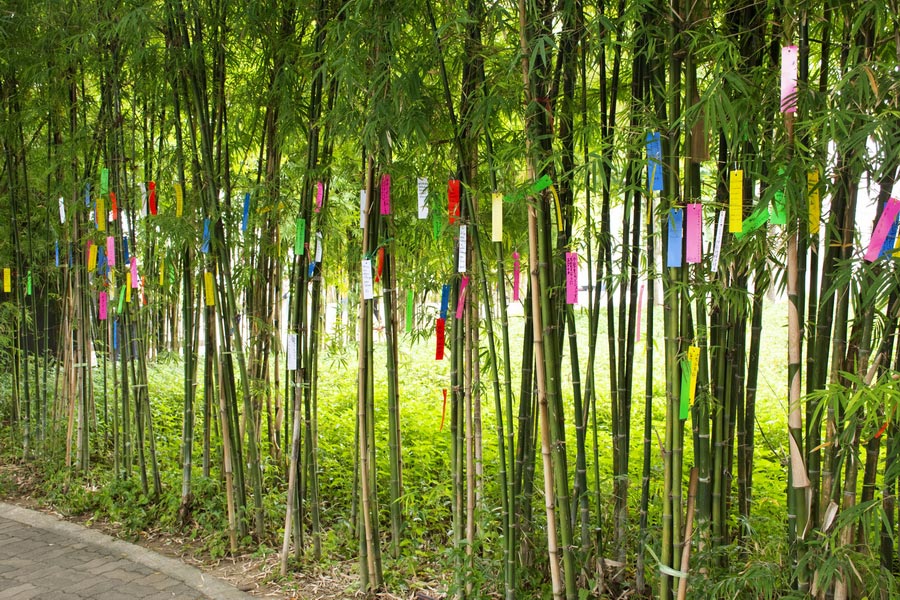
Tanabata (七夕) is a festival that celebrates the legend of two lovers, the weaver Orihime (織姫) and the shepherd Hikoboshi (彦星), symbolized by the star Vega in the constellation Lyra and Altair in the constellation Eagle. The legend originally came from China, telling the story of Zhi-nü (織女) and Niu Lang (牛郎). In Japan, the legend was introduced during the Nara period (710-794).
In the Japanese version of the legend, Orihime (also known as Tanabatatsume) wove beautiful clothes for her father, Tentei (天帝, the Heavenly King), by the banks of the Amanogawa (天の川, Milky Way) River. One day, feeling lonely because her hard work left her no time to meet anyone, Orihime encountered Hikoboshi (also known as Kengyu). They soon married, but their love distracted them from their duties: Orihime stopped weaving, and Hikoboshi's herd wandered off. Angered, Tentei separated them by the Amanogawa River and forbade them from seeing each other. Orihime pleaded with her father, who relented and allowed them to meet once a year on the 7th day of the 7th month. When that day came, they realized there was no bridge to cross the river. Heartbroken, Orihime’s cries were heard by magpies, who formed a bridge with their wings, promising to help the couple each year. From this story comes the belief that if it rains on Tanabata, the lovers cannot meet, as magpies will not fly in the rain.
The first Tanabata Matsuri (七夕祭り), inspired by the Chinese Qixi Festival (七夕), was initially celebrated by the imperial court during the Nara period, around 755, as part of early court rituals. Until the Edo period, it remained an aristocratic celebration where nobles gathered to write poems while admiring the stars. As the festival spread to the general public during the Edo period (1603-1868), people began writing wishes on tanzaku (短冊), small pieces of bamboo paper, which they tied to sasatake (笹竹) bamboo. It was believed that the tall, upright bamboo could carry their wishes to the gods. These decorations were often accompanied by various origami shapes, such as senbazuru (千羽鶴) cranes, kinchaku (巾着) purses, kamigoromo (紙衣) kimonos, and kuzukago (屑籠) baskets.
During the festival, streets are adorned with colorful handmade decorations called fukinagashi (吹き流し), made from fine multicolored paper and stretching up to 10 meters long. These streamers symbolize Orihime’s weaving threads and inspire creativity. Making fukinagashi is a fun family activity, especially for children.
Beyond traditional rituals, Tanabata features lively performances with musicians playing the shamisen (三味線, a traditional string instrument) and taiko (太鼓) drums. Festival-goers can enjoy a variety of traditional street foods from local vendors. In the evening, dressed in light cotton yukata (浴衣), people stroll to the waterfront to watch dazzling fireworks, fully immersing themselves in the joyful summer atmosphere of Japan.

